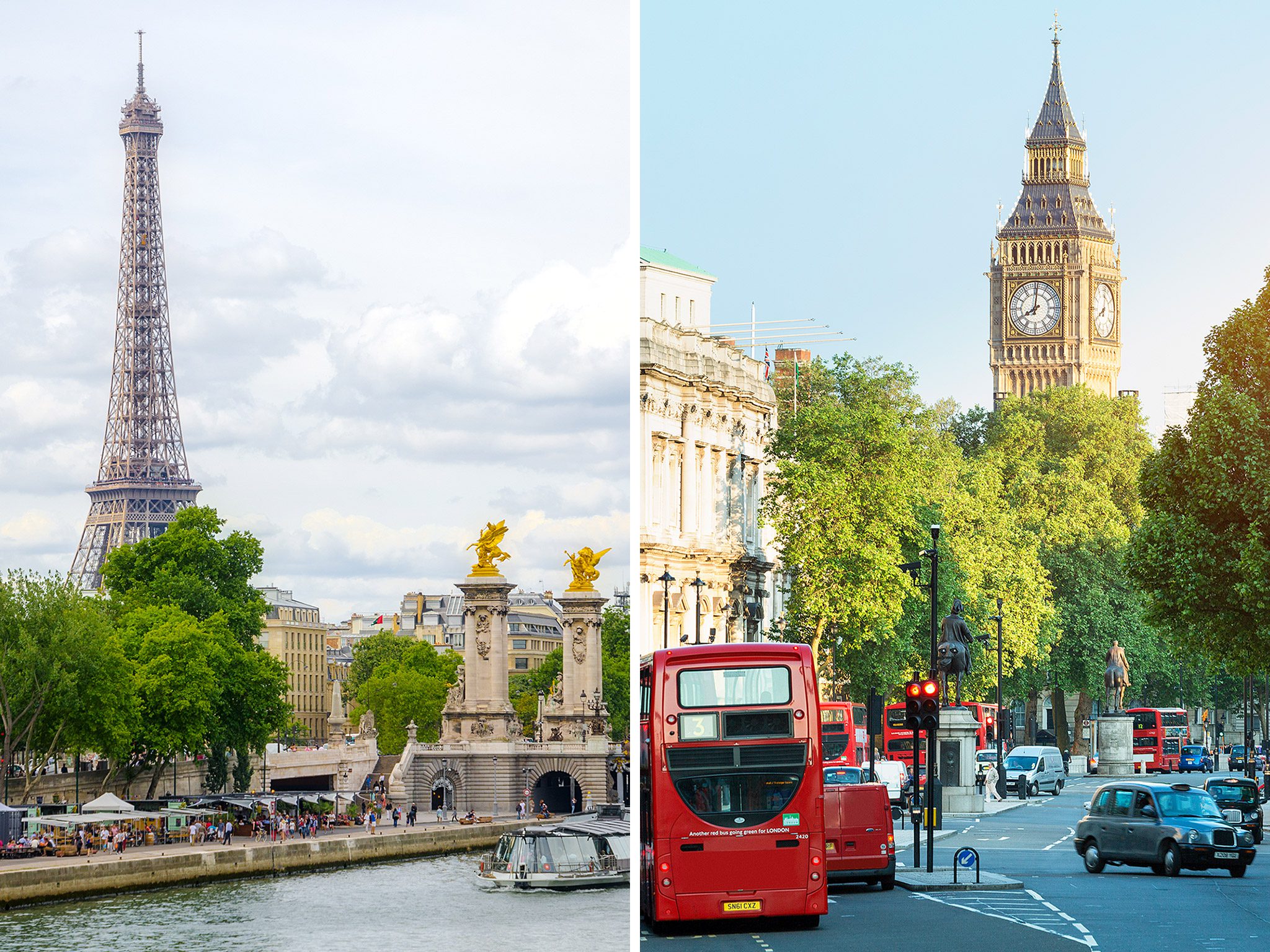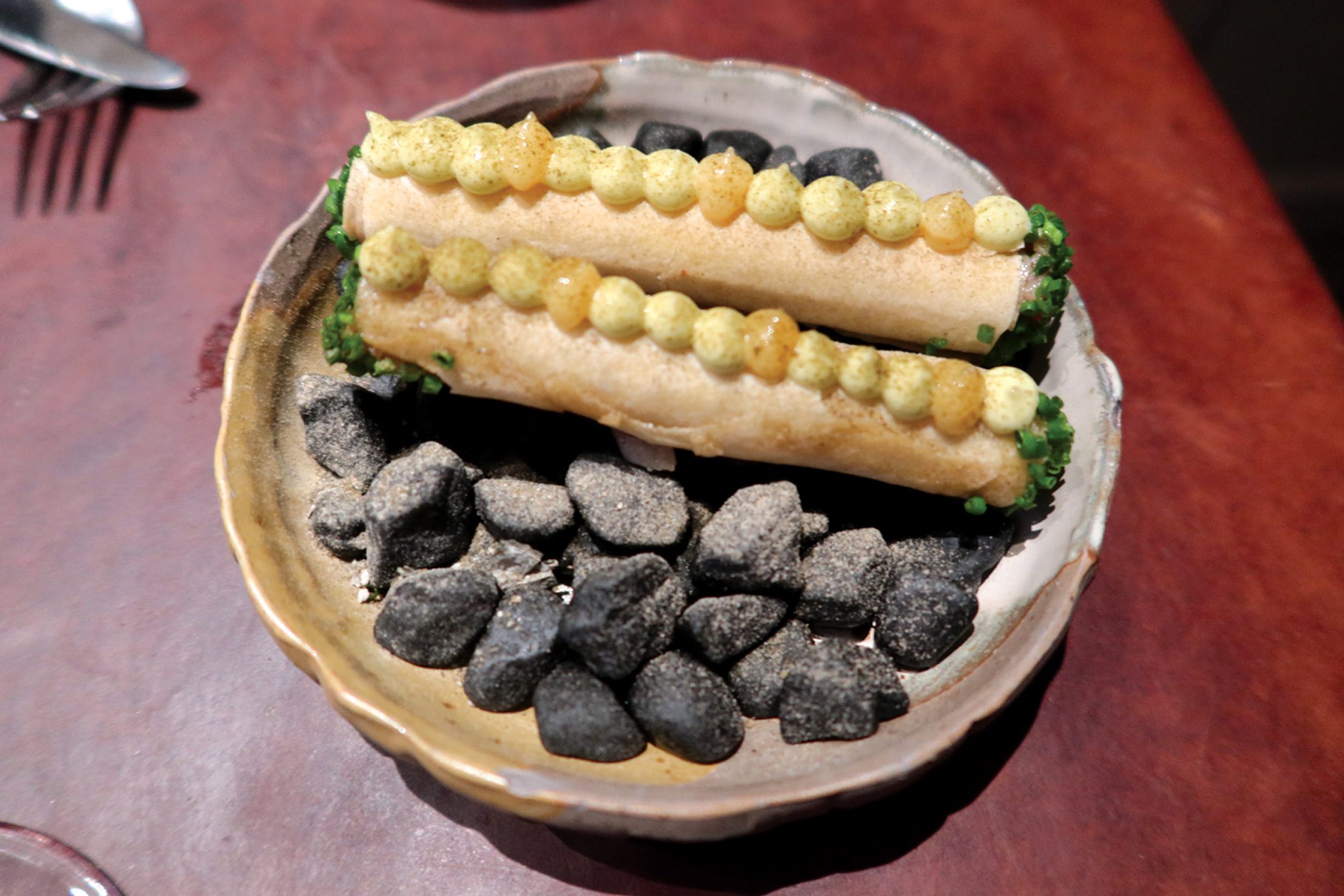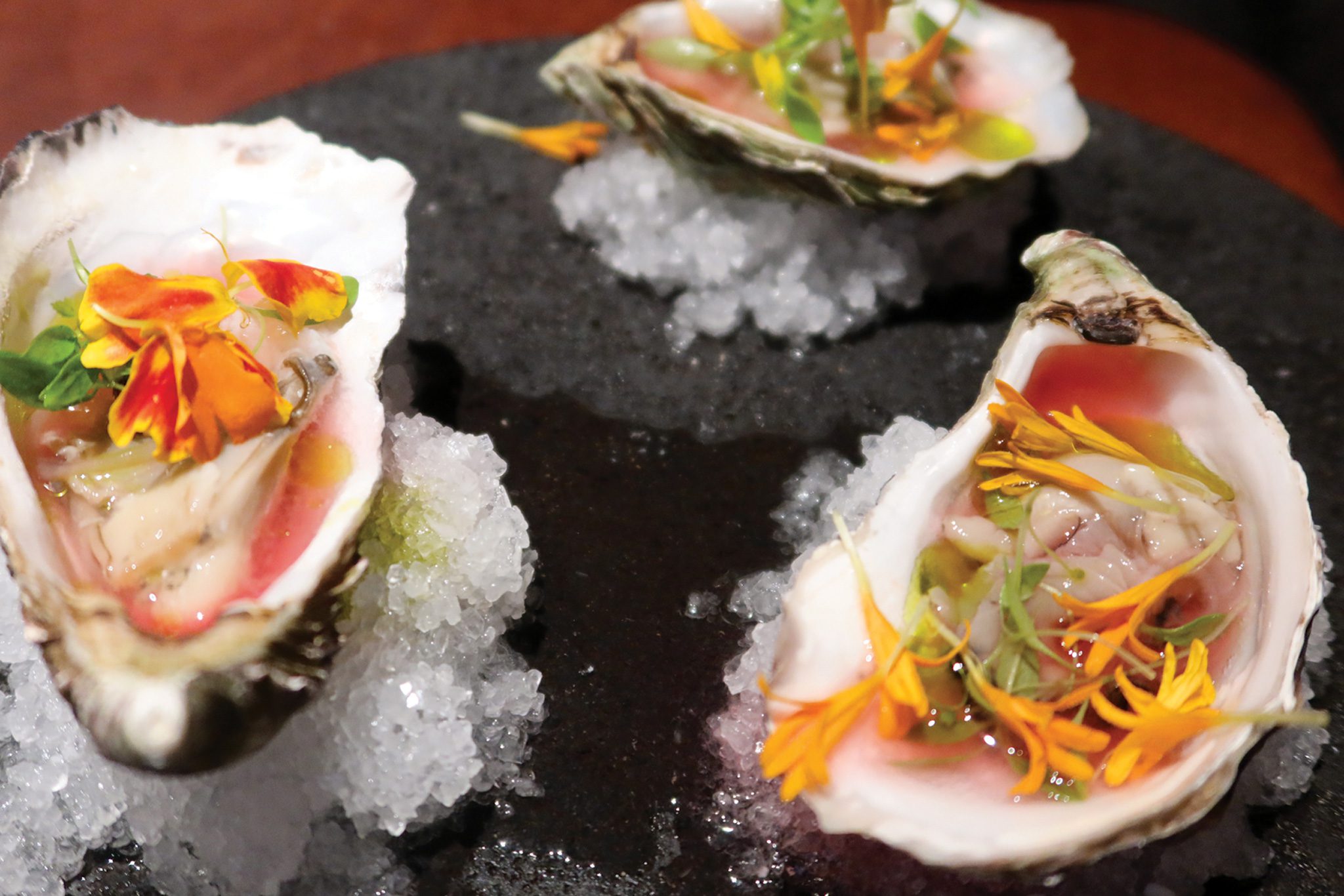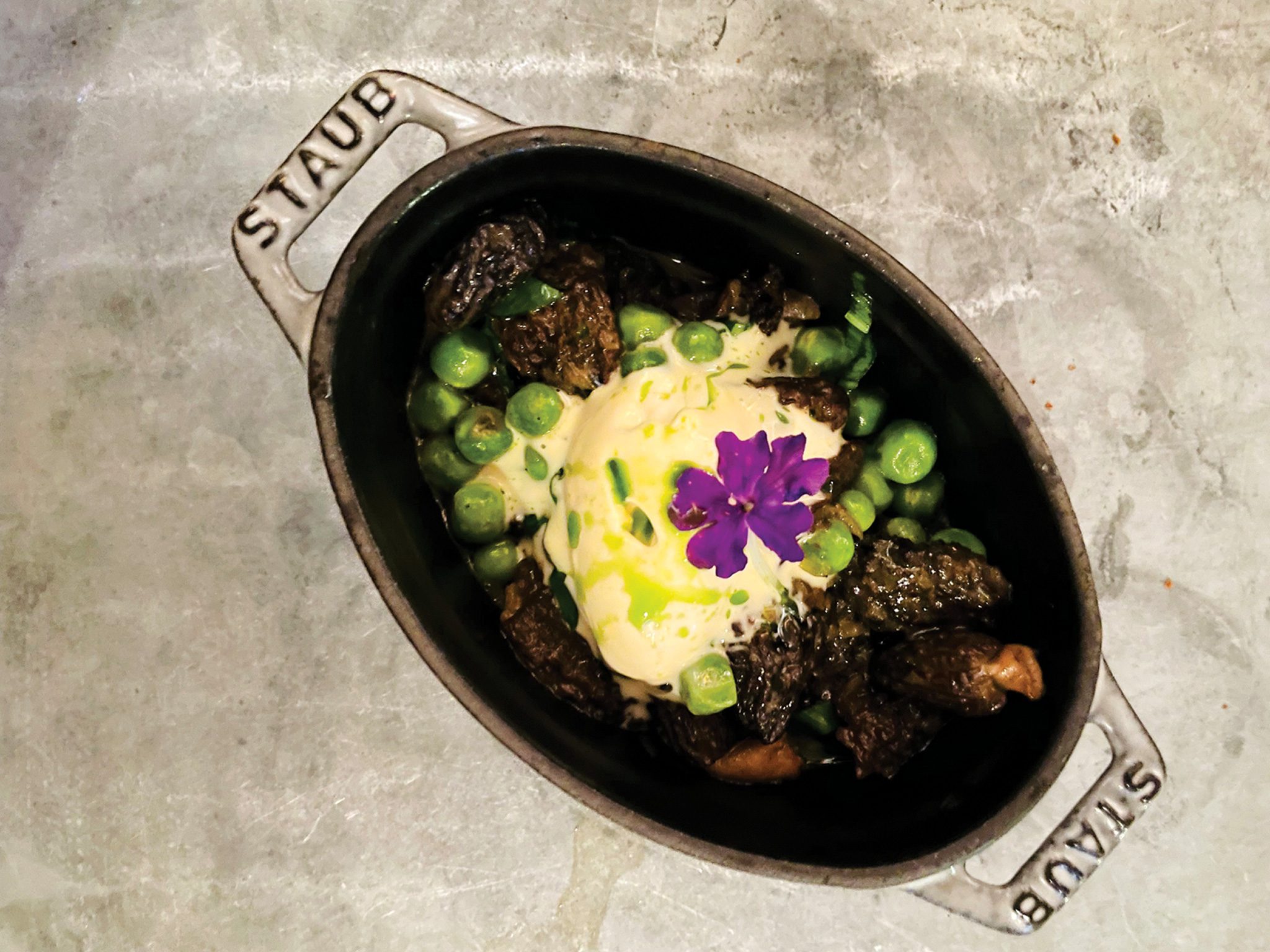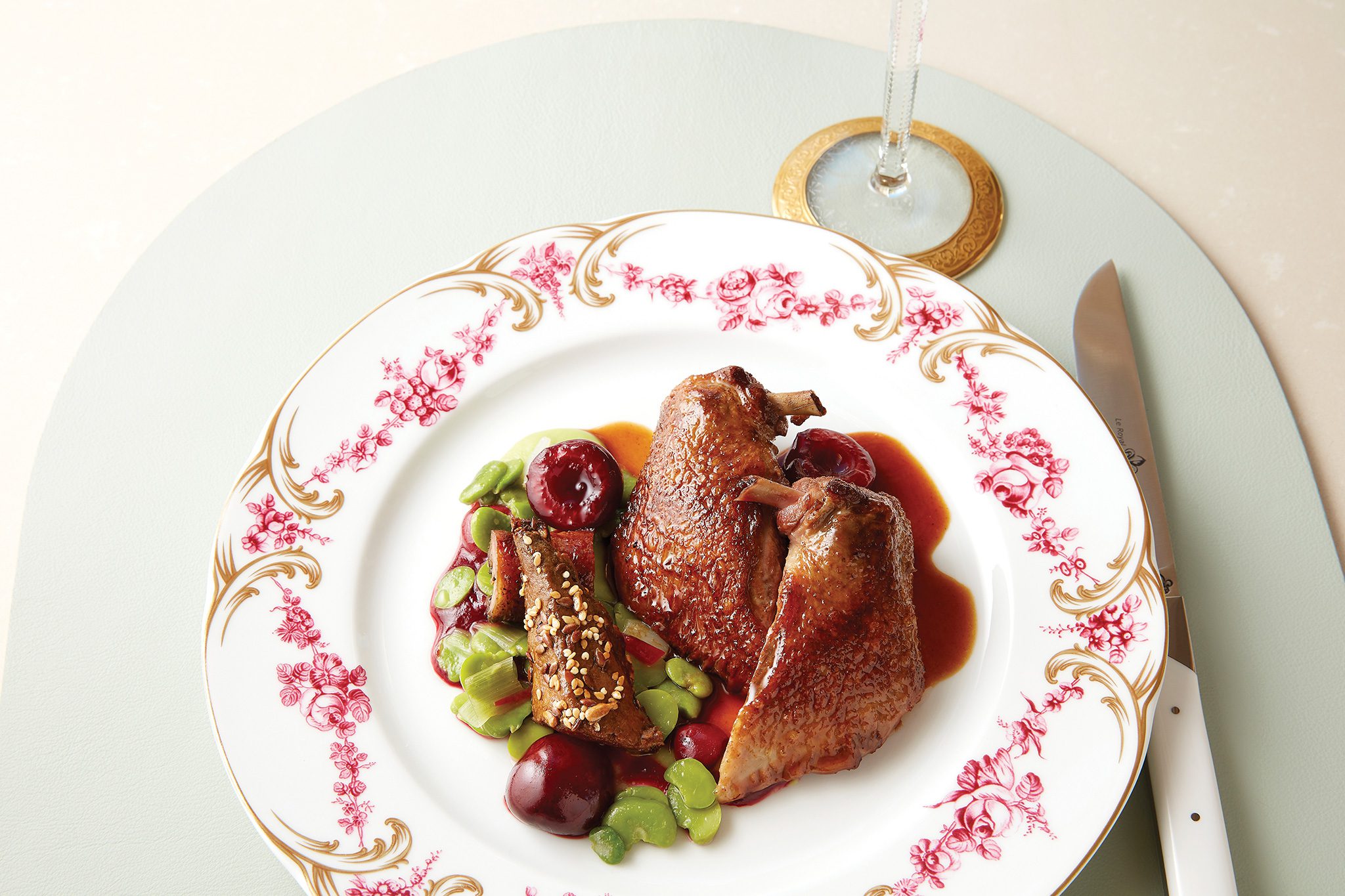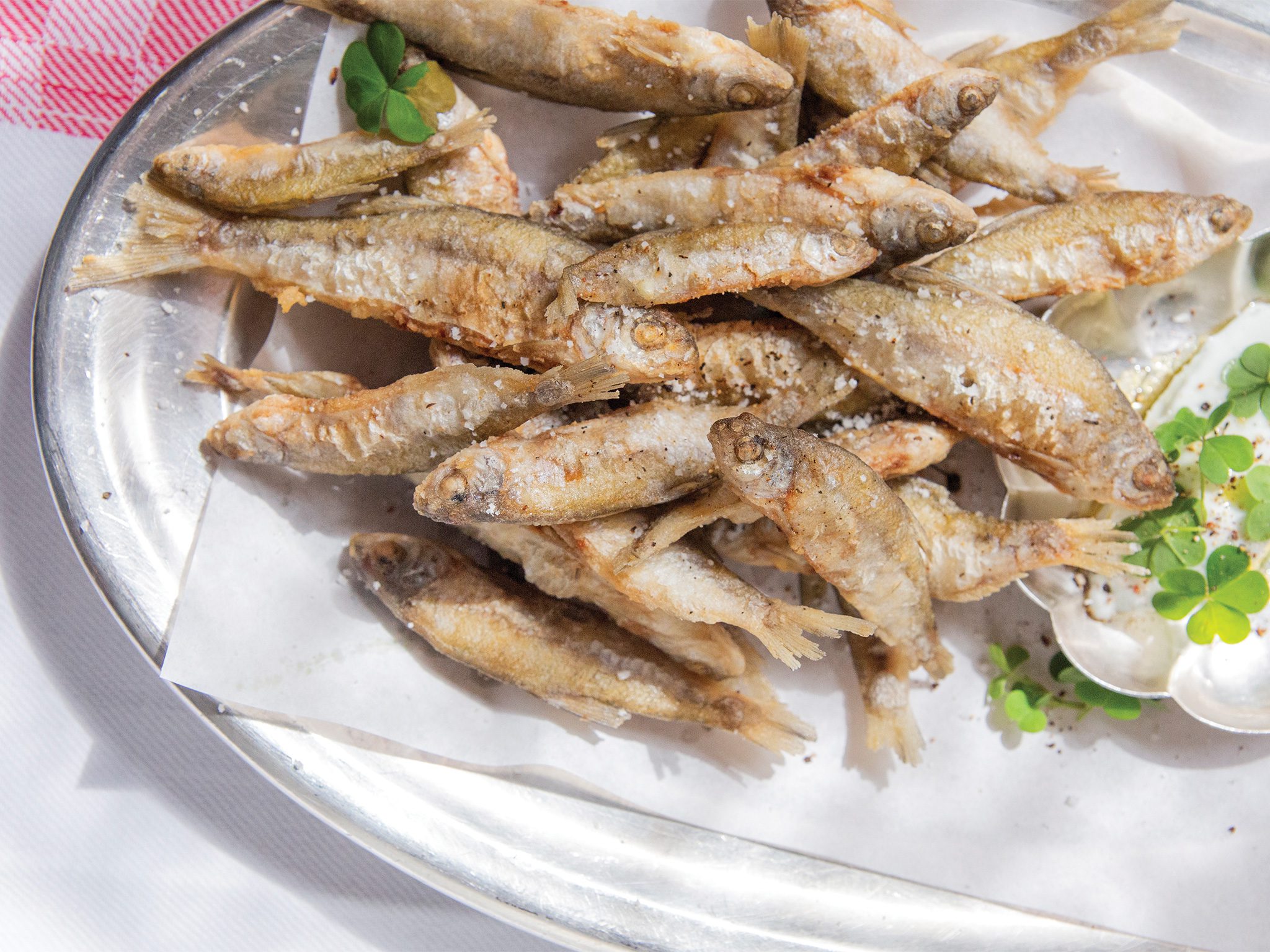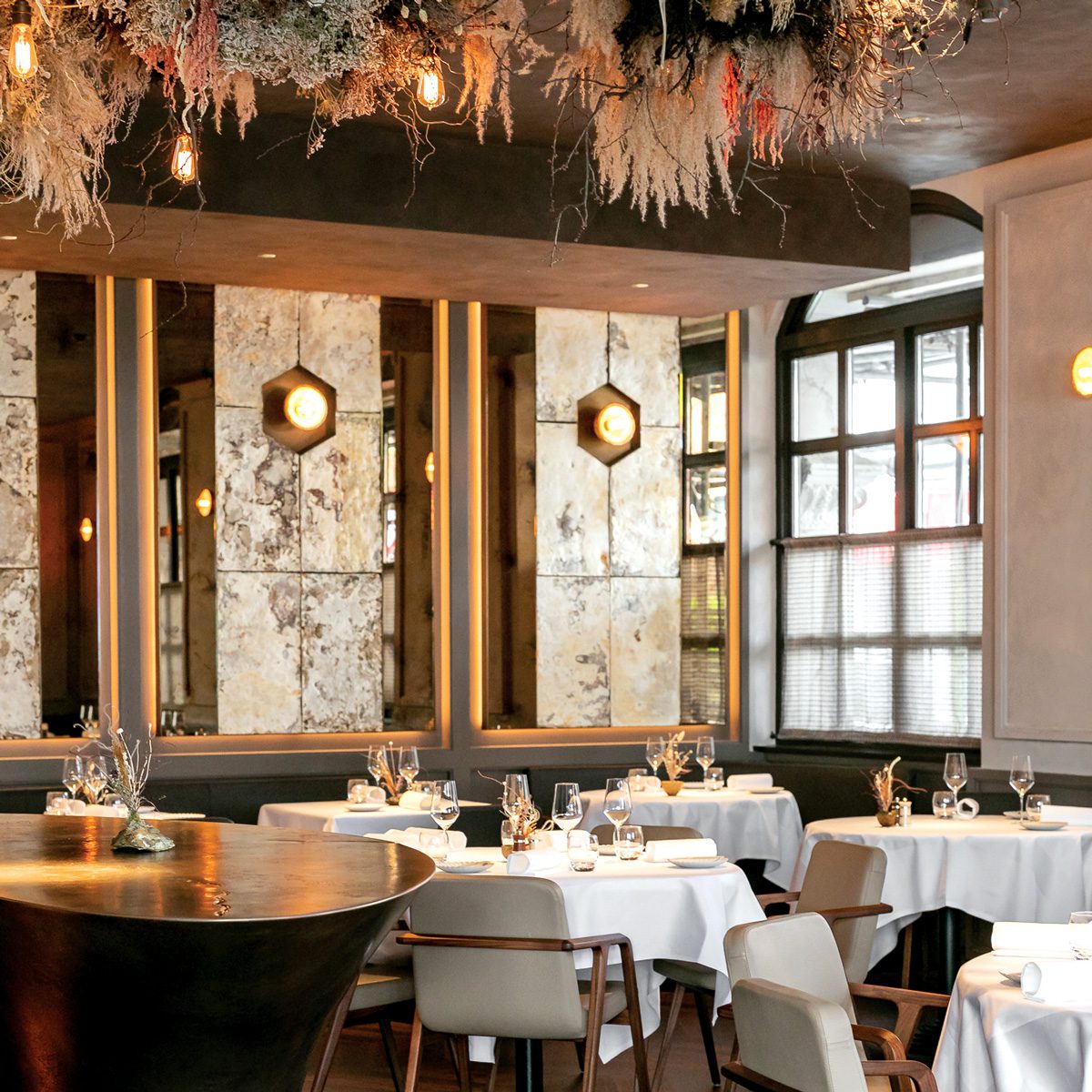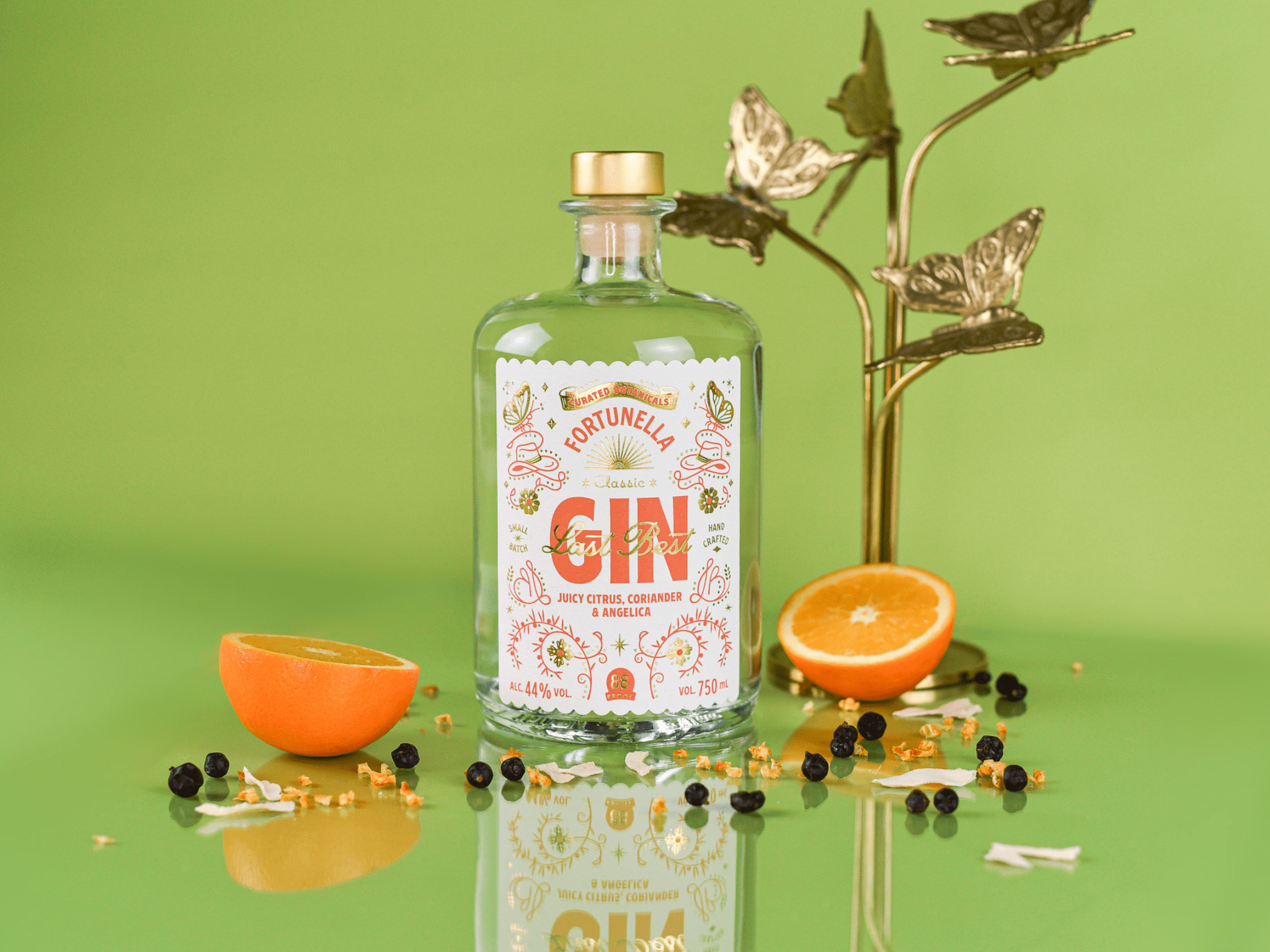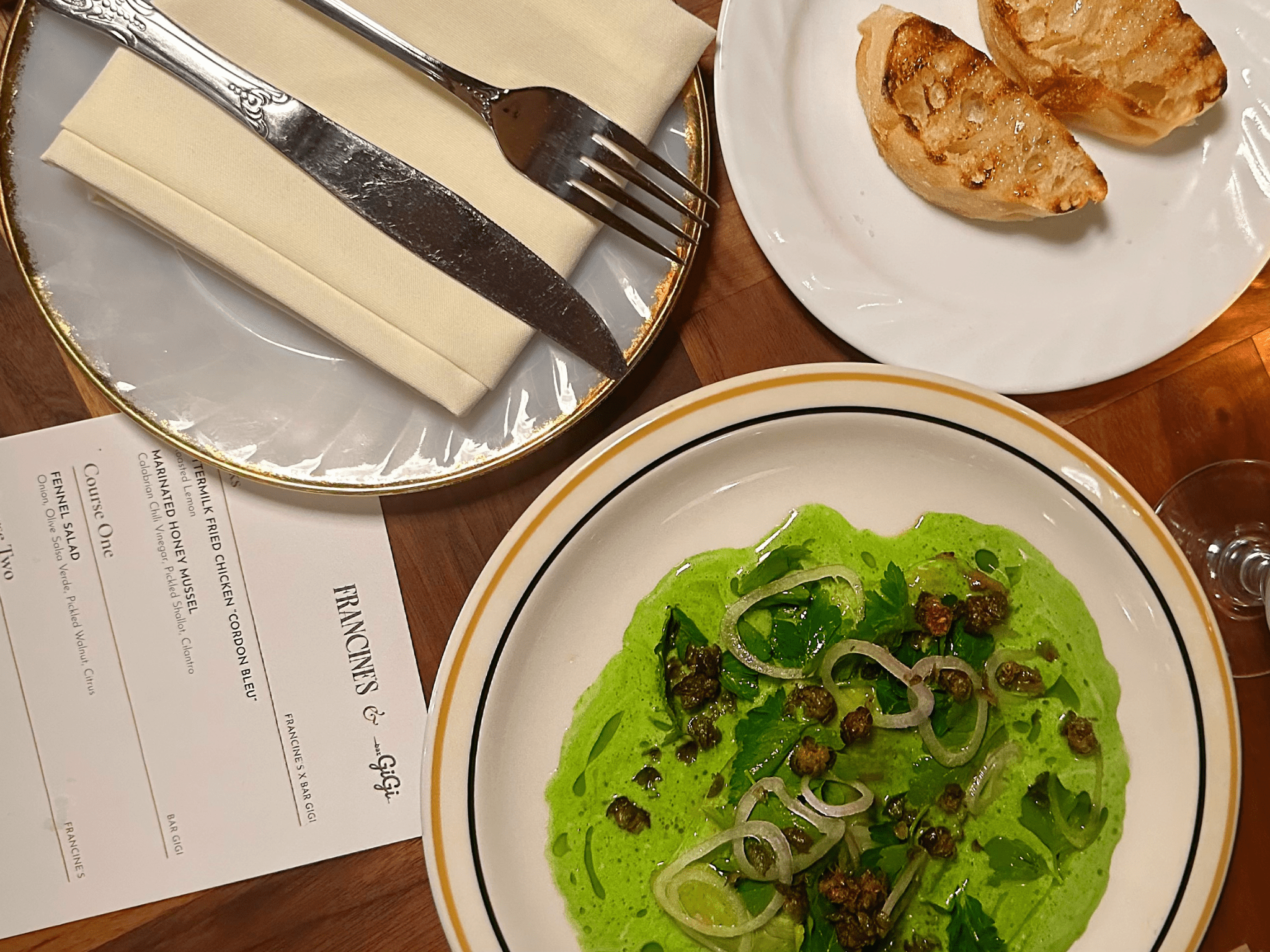Back to London and Paris for a badly needed fix
AROUND THE CORNER FROM OUR HOTEL on boulevard Poissonnière in the 2e, rue Montorgueil was bustling. It was early June and the food shops tucked in between the busy street-side patios had exquisite displays of the season’s best — shiny-fresh fish, beautiful charcuterie, and countless bunches of white asparagus so luxuriously stout and plump as to make you doubt that their woefully stringy Canadian brethren really do share the same genus. And then, after a drink or two, we arrived at rue du Nil.
Here you find Greg Marchand’s Frenchie, a Michelin one-star so popular that it has spawned sister Frenchies near (Quartier Pigalle) and far (Covent Garden, London), as well as a Frenchie wine store, Frenchie to-go and — most important in our scheme of things — Frenchie Bar à Vins. The five-course tasting menu at big Frenchie, at number 5, might generally be the best thing to do on rue du Nil. But when you — like my wife, Lisa, and I — have just arrived in town, tired and jet-lagged from a three-flight trip, the joyously boisterous Bar à Vins is the place to go. And they take walk-ins.
Two years deprived and badly in need of a fix, I had not flown to Paris to check on the latest culinary trends. Rather, I was looking to reconnect with pure, old-school French experiences to quickly remind myself why I so love the place. So, after that first dinner of simple small plates, I had booked the next day’s lunch at Alain Ducasse’s Aux Lyonnais and, a couple of nights later, dinner at his legendary Benoit, venerable bastion of la cuisine bourgeoise. Where better to tuck into a cocotte of sautéed sweetbread, cockscombs and rooster kidneys, doused in truffle jus and topped with a thick slice of seared foie gras?
Other days, in deference to season and health, we ate lighter meals. For quick resuscitation after four wonderful hours strolling about the Louvre, I recommend a short walk to Le Grand Colbert on rue Vivienne for a platter of belons and langoustines washed down with plenty of Sancerre. Or head a few doors down, to Daniel Rose’s Le Bourse et La Vie — an enjoyable little bistro with simple but precise cooking. And if you find yourself in the Marais, in the mood for seafood, you will do very well to visit Le Collier de la Reine, on rue Charlot, where we feasted on plump Normandy langoustines, oysters from Camargue and then shared a very large, simply adorned and very well-grilled whole brill.
France always leaves me with a bad case of ingredient envy. Take for example my whole roast pigeon at Ducasse at the Château de Versailles. No need to confit legs here; mine were roasted to a succulent pink — but were tender and supple all the same. Not to mention the sweetness of the raw white asparagus that preceded it. If I shaved raw white asparagus on a mandoline in the same way back home, they would taste bitter, I said to my waiter.
He shrugged and said, “Really? Well, you should buy them in France.”
Yes, quite.
Even after Brexit, the English have it easy on the products front, too. The food we enjoyed there was — as usual — considerably more varied. From the superlative Basque cooking at Brat and the amazing Portuguese offer at Lisboeta to the homegrown excellence at Berners, London has it all. A quick comparison of the single best meals I had in each locale tidily sums up the story. At Versailles, Ducasse’s kitchen team is doing what the master always did best — the finest products presented with simplicity, and purity of flavour. And at The Ledbury, Brett Graham’s kitchen is involved in a relative frenzy of inventiveness, but all executed and conceptualized within a sensible framework of tradition. So, every new idea worked beautifully. Do I prefer one culinary approach to the other? Should you? No. Why choose when you can so happily go back and have more of each?
Paris
ULTRA-CASUAL DINNER
Frenchie Bar à Vins
6, rue du Nil, 2e arrondissement
In the new Paris, where so many good restaurants close at weekends, and good reservations get snapped up the moment they come online three weeks before the event, a quality, no-reservation spot is more valuable than ever. So here we were, our first night in town, sipping Sancerre at a zinc-topped bar on Frenchie-colonized rue du Nil. I hadn’t finished my glass before a table freed up. I mean part of one – two seats of a snug four-top. Five minutes later we were into a small plate of crisp, light gougères topped with a tangle of grated Comté, some briny Brittany oysters, dressed with spicy oil and fruity vinegar, and a cocotte of braised small, intense morels topped with spring peas and crème fraîche. Then came fat green asparagus, blanched and griddled, sided with aerated hollandaise strewn with toasted buckwheat for texture and earthiness. And, after the thin pastry cigars filled with tuna tartare and sliced razor clam, a half poulard, pan-roasted à point, plated with a pool of light carrot-infused jus, glazed carrots and a quenelle of creamed leek. Excellent seasonal ingredients, smartly executed, and a whole lot of great wines by the glass.
POSH LUNCH
Alain Ducasse au Château de Versailles
12, rue de l’Indépendance américaine
Le Grand Contrôle, the new Alain Ducasse restaurant at the spectacular Airelles hotel on the orangerie of the Château de Versailles, enjoys a setting of aesthetic perfection and grandeur. All the same, upon entering for lunch, we were briefly overcome with doubt. Not for fear of the imminent bill. Rather, the staff in period costumes gave the place an unwelcome whiff of Medieval Times for the ultra-wealthy. No matter, we gave it a go. Good thing, too, for when the prix fixe began to unfold, we were transported to a culinary place I would like to never leave. A magical spot where every ingredient is the best imaginable iteration of itself, cooked with appropriate respect, and combined on the plate only with those that les dieux culinaires intended. Classic Ducasse, in other words. How about plump Burgundian escargots set in translucently thin al dente ravioli, adrift in a light aerated sauce of emulsified butter and green garlic? Or white asparagus three ways – some spears poached and seared, others turned into a quenelle of asparagus mousse, and still more shaved raw into ribbons clustered in a nest on top – all with the best hazelnuts scattered on top? Next up, a whole squab, roasted with hay, mildly smoky and a perfect pink throughout, nestled on a bed of small, intensely flavoured favas, sliced olives and bronzed roast potatoes. And spectacularly delicate rack and belly of milk-fed lamb, pink and supple, accompanied by its minced offal stuffed into a potato, artichokes and perfectly rendered jus. To conclude, a perfect bright mousse of tart, which I renamed “apotheosis of chocolate and praline.” Sure, the notoriously calf-proud Sun King would have heartily disapproved of our waiter, whose twiggy pegs left his white stockings unfilled and flapping like a spinnaker on a windless day. But he would definitely have drafted the chef.
CASUAL LUNCH
Aux Lyonnais
32, rue Saint-Marc, 2e arrondissement
This 132-year-old bouchon was on the ropes and seemingly done for when the estimable Alain Ducasse purchased it in 2004. Fortunately, his plans for returning it to glory did not include tampering with its décor, which is so much more charming than the sum of its worn and inexpensive parts. The makeover instead took place mainly in the kitchen – where chef Marie-Victorine Manoa is brightening and freshening the offal-heavy oeuvre of Lyonnais classics with a delightful finesse. We started with crisp radishes and a friture of baby bream from the Loire (two crispy inches long, fried whole, with a side of aïoli). Next, boudin noir in a phyllo jacket, white asparagus sauced with sorrel puree, and escargots with a divine royale of morels. I got so contentedly immersed in Manoa’s lightened take on the classic quenelle de brochet (a single hollandaise-doused dumpling of pike-perch came paired with a succulent crisp-skinned fillet of the same fish) that I missed out on sampling Lisa’s roast quail with peas and scallions and had to ask after its suddenly absent sauce. What was it? “Heaven sauce,” she said.
London
FESTIVE LUNCH
Berners Tavern
10 Berners St., Fitzrovia
There are other Jason Atherton restaurants serving more ambitious and elevated food (Pollen Street Social, for example), but none compete with the glory of this room in Ian Schrager’s The London Edition hotel. The soaring ceiling, the stunning sculpture of its mouldings, the compelling excess of the paintings crammed so artfully onto its walls – and the celebratory tinkle of the champagne trolley heading your way the moment you settle in. Food here is upscale British – but contemporary, and enthusiastically accepting of international influences. As in beet-cured Scottish salmon, with yuzu purée and furikake-dusted radishes. Roast lemon sole with blue prawns, capers and crushed potatoes always makes for a perfect lunch here. Speaking of which, did I mention that they have Demaine des Comtes Lafon Meursault “Charmes” 1er Cru 2014 by the glass?
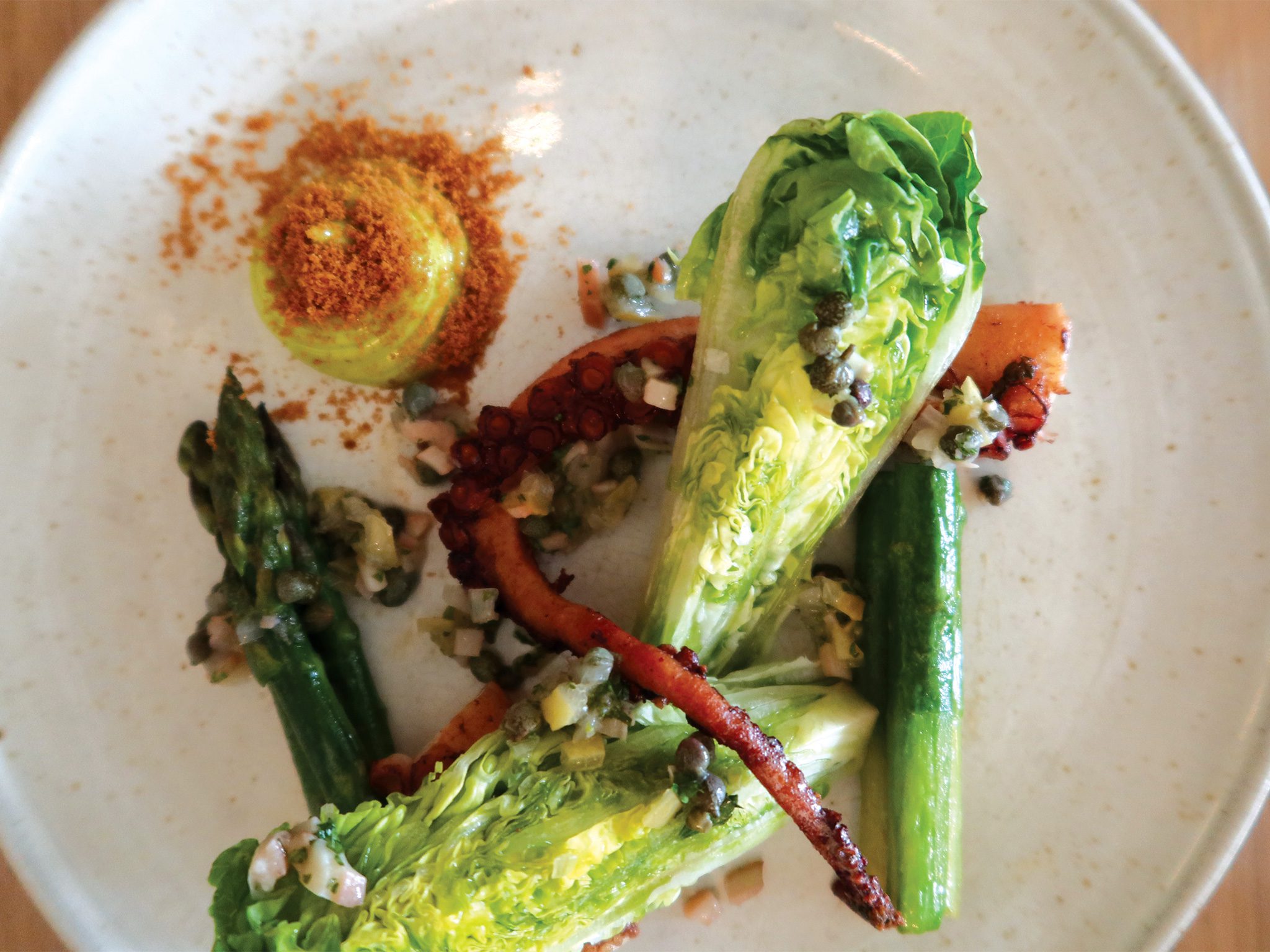
POSH LUNCH
The Ledbury
127 Ledbury Rd., Notting Hill
It was item 3 in a flurry of delightful amuse-bouches that captured our undivided attention – a strip of crisp, light sourdough waffle, its four indentations filled with a luscious sunchoke purée, topped generously with a julienne of the season’s first (and most remarkably pungent) black truffle from Tasmania. Three perfect notes and complementary textures in delightful harmony. The conversation Lisa and I had hitherto been enjoying around a meal refocused on the meal itself. The way the sweet, room-temperature Cornish crab was offset by the acidic chill of frozen citrus, the mix softened with cultured cream. Had I ever eaten a more perfect study of fish + butter sauce than this luscious crisp-skinned, charcoal-grilled Hampshire trout? What gave its roe-laced hollandaise so many layers of citric complexity? Was it yuzu? No, fermented citrus peels – and plenty more, besides. “Do you know how many hours go into that sauce?” chef-owner Brett Graham cheerfully asked me, in his kitchen afterwards. Well, no, I did not. But I know it’s worth it. So, emphatically, was spending four hours of our last afternoon in London sitting at a table. When The Ledbury closed for more than 18 months during the pandemic, many feared it was gone for good. You can relax. The restaurant is very much back, and then some – elegantly refurbished with fewer seats (and services) on which to lavish its attention.
CASUAL DINNER
Lisboeta
30 Charlotte St., Fitzrovia
It had been a few years since I last ate food by the Portuguese chef Nuno Mendes – back when he was helming the kitchen at the very-happening Chiltern Firehouse in Marylebone. It was very good. But this… this is great, we were all thinking as we settled in at the front, main-floor bar of his charming new restaurant spread over the full three storeys of a Charlotte Street townhouse. We had started with Albariño and pork every which way – wonderful crusty farm bread spread with whipped lardo, various cuts of cured ibérico (copita and presunto), pork tartlets draped with melting lardo. Then we transitioned to seafood, straddling the switchover with an exquisite morcilla topped with razor clam, moving on to creamy bacalhau. And as we polished off our plate of plump carabineiro dressed with piri-piri and garlic, we watched Mendes at the pass, a few metres away, putting the finishing touches on our Dover sole. It was grilled skin-on and nearly blackened – to wonderful effect. But I prefer to leave you with a different, lingering flavour of this wonderful place – abade de priscos. A next-level custard, unusually round and luscious in its mouthfeel because its constituent egg yolks were bound with pork fat. That’s right, pork-fat custard with port caramel. Oh my.
CASUAL DINNER
Brat
4 Redchurch St., Shoreditch
Blame it, if you like, on the legendary Asador Etxebarri, in the Basque Country, or maybe on Argentine Francis Mallmann, striking all those Rodin poses as he pondered so much fire in that silly Netflix show. Whatever the cause, restaurants pushing open-fire cooking are enjoying a long stretch of trendiness that defies the difficulty of getting it right. Most such restaurants leave me thinking, Well, I guess they’re doing the best they can with the hand they dealt themselves. When what you want to think is: Wow, this tricky method cooking brought out the best in that great kitchen team. What you want, specifically, is this little marvel of a John Dory. Ten seconds more or 20 seconds less over the fire – or a centimetre or two closer to or farther from the fire – and it wouldn’t have been perfect. But it was. And, consistently, so was every other unadorned, simply presented ingredient-forward dish that came our way here, at Brat – from grilled chorizo and langoustine to the pork collar, lamb chops with sweetbread, mutton chop and smoked potatoes. This utterly unpretentious Basque-inspired second-floor restaurant with floor-to-ceiling windows in once-sketchy but now up-and-coming Shoreditch is a treat, start to finish.
— Jacob Richler
Share
Related Posts
What’s on Chef Daniel Beaulieu’s Menu at änkôr?
Ten years ago, Canmore was very much known for its access to rugged trails and…
Five Distilleries To Watch in Alberta
Spirits are high in Alberta, with the distillation scene not only booming across the province,…
New Kids on the Block
YYC Food and Drink Experience is in full swing, with restaurants across Calgary showcasing highlights…

